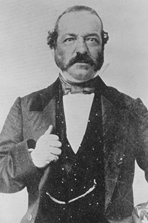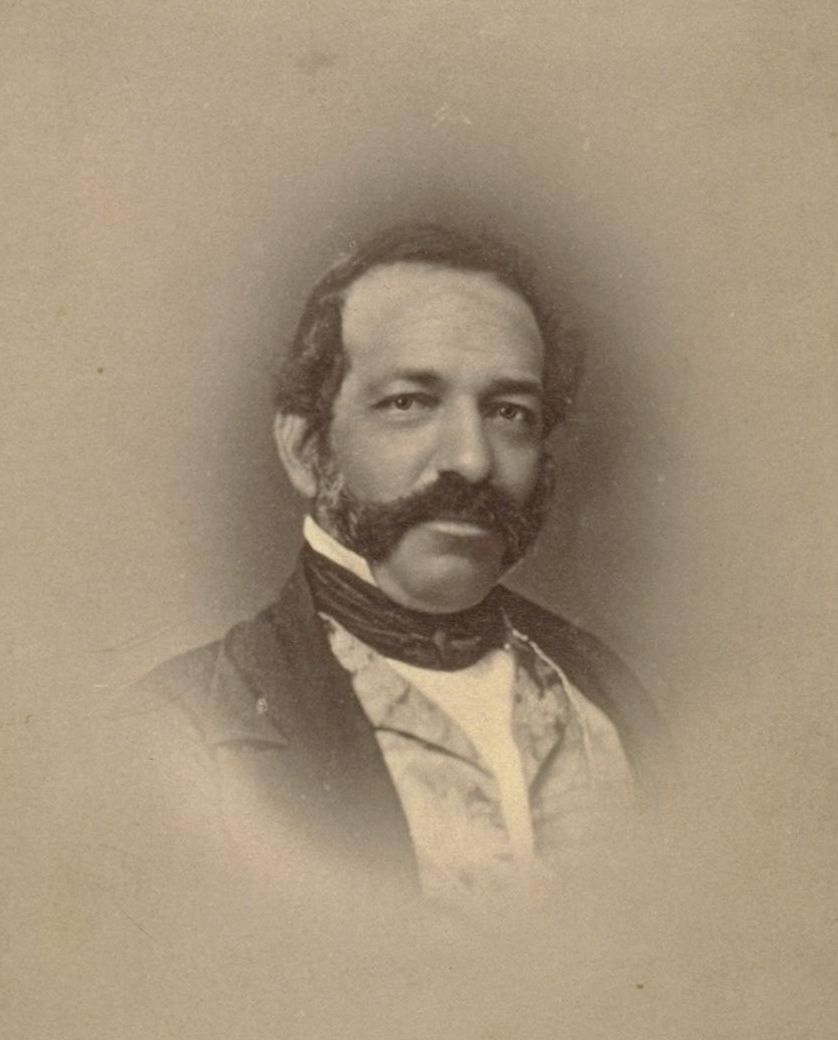When U.S. troops invaded California in 1846, Pico became a commander and won glory on December 6, 1846 by defeating Stephen Watts Kearny at the Battle of San Pascual.
An excerpt from "Seventy-five years in California"
"In the battle just described, Don Andres Pico, who was brave and honorable, displayed so much courage and coolness as to excite the admiration of the Americans. He never did an act beneath the dignity of an officer or contrary to the rules of war, and was humane and generous. If he saw one of the enemy wounded, he instantly called upon his men to spare the life of the wounded soldier. Kind and hospitable, Pico was held in great esteem by the Americans who knew him."
On January 13, 1847, Andres Pico, as newly appointed Commander-in-Chief of Mexican Forces in California, met with Lieutenant Colonel John C. Frémont at a Cahuenga Pass ranch house and formally signed the Articles of Capitulation, generally termed the "Capitulation of Cahuenga". This was a significant treaty that led indirectly to California's statehood by ending rival hostilities in California for the duration of the Mexican War.
Andres Pico served only two days as Governor of California, his term ending with the Capitulation of Cahuenga on January 13, 1847.
Andrés Pico retained considerable wealth and influence during the "American period." Caught up in the Gold Rush craze, he purchased a mining enterprise in 1848 and acquired half the San Fernando Valley—nearly 60,000 acres of land—from Los Angeles merchant Eulogio de Celis in 1853.
He retired to the 16,000-acre Rancho San Fernando, of which he had been the patron, and started exploring nearby canyons. In 1855, he began hauling "asphaltum" out of the canyon that would later bear his name, "Pico Canyon" in Santa Clarita, Los Angeles, Ca. He served as a state senator from San Diego in 1860 and 1861 as a Breckenridge Democrat (Southern sympathizer).
On Feb. 14, 1876, Andres Pico was found in the street unconscious in Los Angeles and died later that day.
When U.S. troops invaded California in 1846, Pico became a commander and won glory on December 6, 1846 by defeating Stephen Watts Kearny at the Battle of San Pascual.
An excerpt from "Seventy-five years in California"
"In the battle just described, Don Andres Pico, who was brave and honorable, displayed so much courage and coolness as to excite the admiration of the Americans. He never did an act beneath the dignity of an officer or contrary to the rules of war, and was humane and generous. If he saw one of the enemy wounded, he instantly called upon his men to spare the life of the wounded soldier. Kind and hospitable, Pico was held in great esteem by the Americans who knew him."
On January 13, 1847, Andres Pico, as newly appointed Commander-in-Chief of Mexican Forces in California, met with Lieutenant Colonel John C. Frémont at a Cahuenga Pass ranch house and formally signed the Articles of Capitulation, generally termed the "Capitulation of Cahuenga". This was a significant treaty that led indirectly to California's statehood by ending rival hostilities in California for the duration of the Mexican War.
Andres Pico served only two days as Governor of California, his term ending with the Capitulation of Cahuenga on January 13, 1847.
Andrés Pico retained considerable wealth and influence during the "American period." Caught up in the Gold Rush craze, he purchased a mining enterprise in 1848 and acquired half the San Fernando Valley—nearly 60,000 acres of land—from Los Angeles merchant Eulogio de Celis in 1853.
He retired to the 16,000-acre Rancho San Fernando, of which he had been the patron, and started exploring nearby canyons. In 1855, he began hauling "asphaltum" out of the canyon that would later bear his name, "Pico Canyon" in Santa Clarita, Los Angeles, Ca. He served as a state senator from San Diego in 1860 and 1861 as a Breckenridge Democrat (Southern sympathizer).
On Feb. 14, 1876, Andres Pico was found in the street unconscious in Los Angeles and died later that day.


















